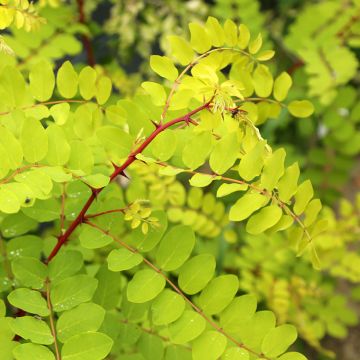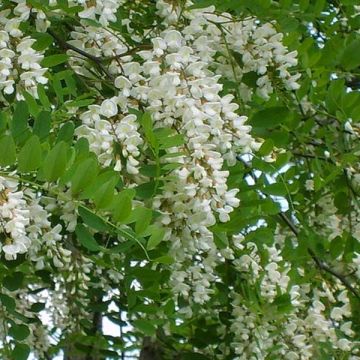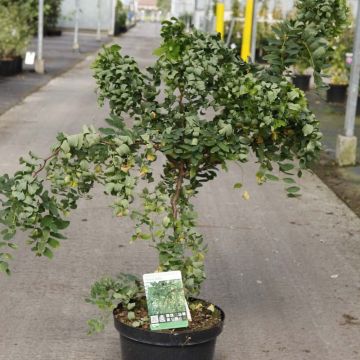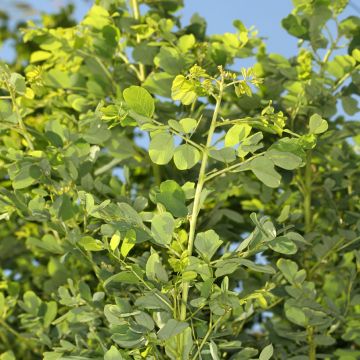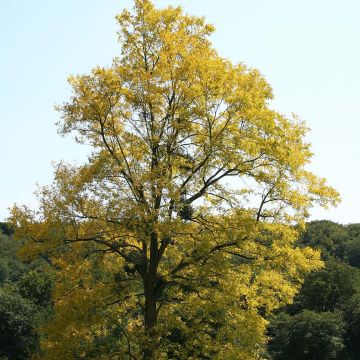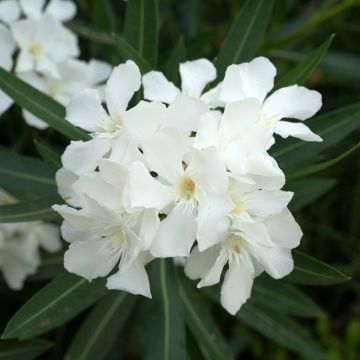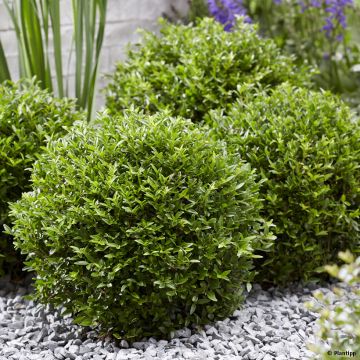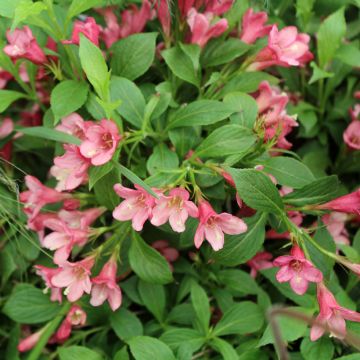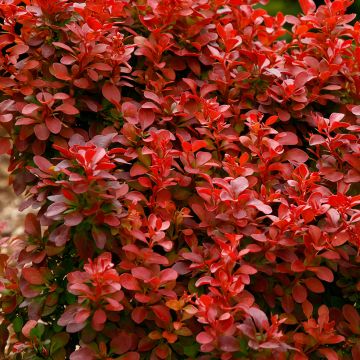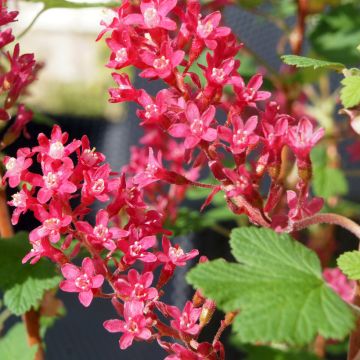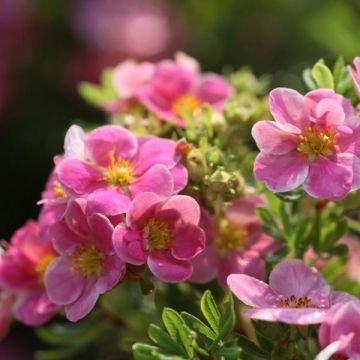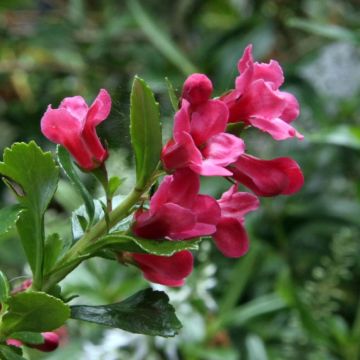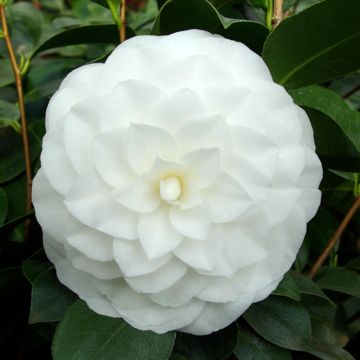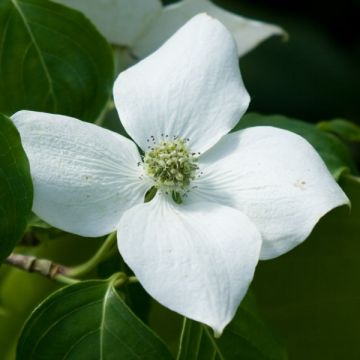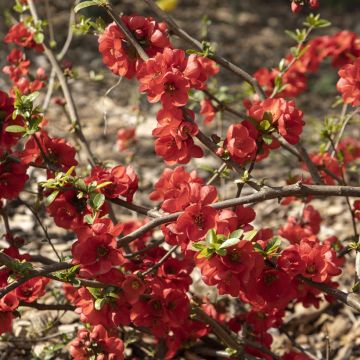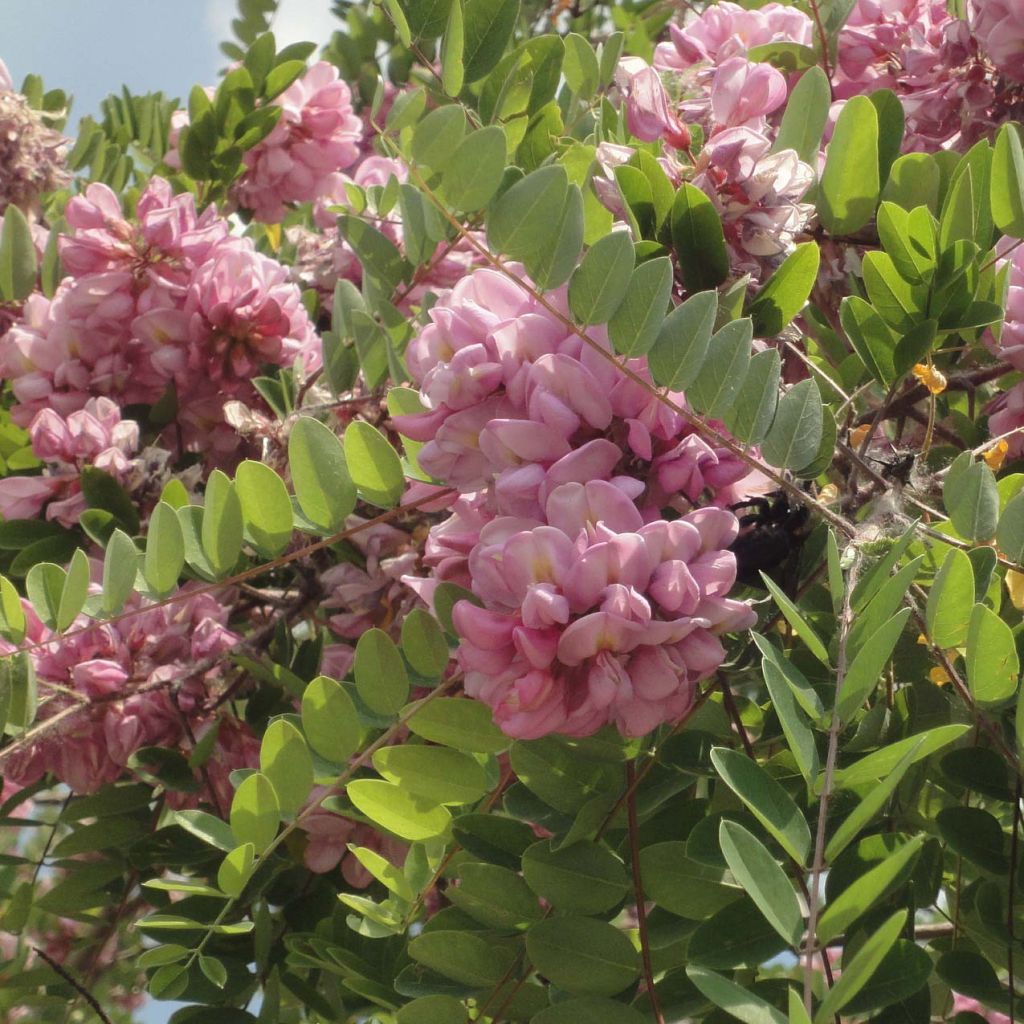

Robinia hispida Rosea - Rose acacia
Robinia hispida Rosea - Rose acacia
Robinia hispida (elliottii) Rosea
Rose acacia, Bristly Locust
22/10/2019 around 4:25 pm - Contact: Very lovely bush, commonly known as "ACACIA" Hispida Roséa. It flowers twice a year, in June and August, with beautiful pink flowers..... But the branches are very brittle; due to the wind or the weight of the flowers during the flowering period.................. Such a shame! My tree is already 40 years old, and it has almost no branches left, only the trunk which is between 15 and 20 cm (6 and 8in) in diameter and 1.5 meters (5 feet) tall.... Can it be grafted with scions from its own branches??? I would like to save my beloved tree...............
Michel, 22/10/2019
This plant carries a 24 months recovery warranty
More information
We guarantee the quality of our plants for a full growing cycle, and will replace at our expense any plant that fails to recover under normal climatic and planting conditions.
From €5.90 for pickup delivery and €6.90 for home delivery
Express home delivery from €8.90.
Delivery to Corse prohibited: UE law prohibits the import of this plant from mainland France to Corse as part of the fight against Xylella fastidiosa. Please accept our sincere apologies.
More information
Does this plant fit my garden?
Set up your Plantfit profile →
Description
Robinia hispida 'Rosea' is commonly known as the Rose Acacia. Its light and finely-cut foliage, its flowering in clusters of papilionaceous flowers, and its excellent adaptability to poor soils are all characteristics that bring together members of the Fabaceae family. This Robinia, which does not exceed three metres in height, blooms abundantly in spring, and again in late summer, in a lovely dark pink colour. Naturally resistant to summer drought and not demanding in terms of soil, this Robinia is a boon for dry or natural gardens.
Robinia hispida (synonym Robinia elliottii) is native to the dry undergrowth of the Southeastern United States. Fabaceae are capable of assimilating nitrogen in its atmospheric form and not in its organic form, allowing them to grow in nutrient-poor soils. The 'Rosea' cultivar stands out for its darker pink colour in its flowering. It quickly reaches a height of 1.80 metres (6ft), then its growth slows down. It will reach an average height of 2.75 metres (9ft) at maturity, with a spread of 2.50 metres (8ft). Its habit is fairly loose and overall rounded. It develops one or more thin trunks and a sparsely leafy crown, carried by brittle branches. The branches of this Robinia are glandular and covered with brown spines. Its deciduous leaves, 15cm (5.9in) long, are divided into 10 to 13 small leaflets, in a tender light green colour. The flowering takes place in May-June and often again in August-September, on relatively young individuals. The pendulous and generous inflorescences, 10 to 20cm (3.9 - 7.9in) long, are produced abundantly. They are composed of numerous dark pink papilionaceous flowers that go perfectly with the light green foliage. This flowering attracts pollinating insects. It is followed by the formation of flat, hairy pods, 6 to 8cm (2.4 - 3.1in) long, containing brown seeds.
This Rose Robinia is suitable for both small and large gardens. Planted alone in the centre of a bed, it also thrives on slopes or in informal and defensive hedges. You can place it against a background of evergreen shrubs or conifers (cypress, thuja, yew, junipers), surrounded by roses that often bloom simultaneously. It can also be associated, in a flowering grove and in poor soil, with other undemanding and highly ornamental trees or shrubs such as Sophora davidii, Laburnum cytisus, Indigofera gerardiana, Colutea arborescens ...
Report an error about the product description
Robinia hispida Rosea - Rose acacia in pictures
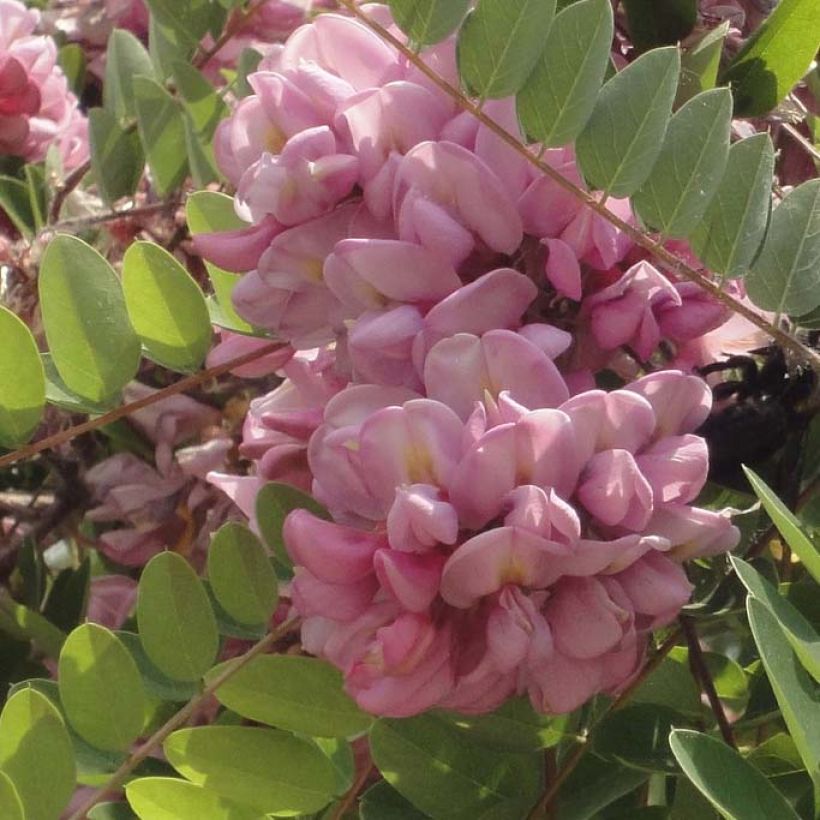

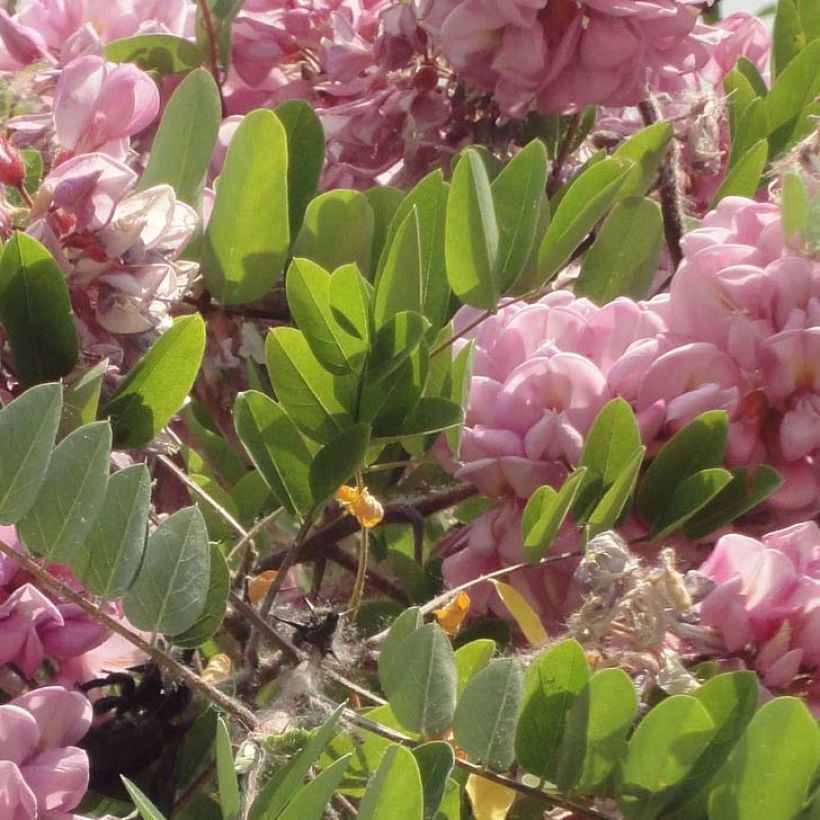

Plant habit
Flowering
Foliage
Botanical data
Robinia
hispida (elliottii)
Rosea
Fabaceae (Papilionacea)
Rose acacia, Bristly Locust
Cultivar or hybrid
Other Robinia - Black Locust
Planting and care
Robinia hispida 'Rosea' thrives in the sun, sheltered from strong winds and sea spray as its branches can be very brittle and the wind can damage its flowering. The soil should be light and well-drained, even poor, preferably moist even though this plant tolerates summer drought very well once established. In reality, it has few soil requirements, performing well in clay soils if properly drained. Its resistance to atmospheric pollution is excellent, making it valuable in urban areas. From August to October, prune dead or weak wood to prevent sap flow. Also remove branches that cross within the canopy to maintain the proper habit of the Robinia. Beware of voles, which greatly enjoy the bark and attack the base of plants.
Planting period
Intended location
Care
-
, onOrder confirmed
Reply from on Promesse de fleurs
Hedge shrubs
Haven't found what you were looking for?
Hardiness is the lowest winter temperature a plant can endure without suffering serious damage or even dying. However, hardiness is affected by location (a sheltered area, such as a patio), protection (winter cover) and soil type (hardiness is improved by well-drained soil).

Photo Sharing Terms & Conditions
In order to encourage gardeners to interact and share their experiences, Promesse de fleurs offers various media enabling content to be uploaded onto its Site - in particular via the ‘Photo sharing’ module.
The User agrees to refrain from:
- Posting any content that is illegal, prejudicial, insulting, racist, inciteful to hatred, revisionist, contrary to public decency, that infringes on privacy or on the privacy rights of third parties, in particular the publicity rights of persons and goods, intellectual property rights, or the right to privacy.
- Submitting content on behalf of a third party;
- Impersonate the identity of a third party and/or publish any personal information about a third party;
In general, the User undertakes to refrain from any unethical behaviour.
All Content (in particular text, comments, files, images, photos, videos, creative works, etc.), which may be subject to property or intellectual property rights, image or other private rights, shall remain the property of the User, subject to the limited rights granted by the terms of the licence granted by Promesse de fleurs as stated below. Users are at liberty to publish or not to publish such Content on the Site, notably via the ‘Photo Sharing’ facility, and accept that this Content shall be made public and freely accessible, notably on the Internet.
Users further acknowledge, undertake to have ,and guarantee that they hold all necessary rights and permissions to publish such material on the Site, in particular with regard to the legislation in force pertaining to any privacy, property, intellectual property, image, or contractual rights, or rights of any other nature. By publishing such Content on the Site, Users acknowledge accepting full liability as publishers of the Content within the meaning of the law, and grant Promesse de fleurs, free of charge, an inclusive, worldwide licence for the said Content for the entire duration of its publication, including all reproduction, representation, up/downloading, displaying, performing, transmission, and storage rights.
Users also grant permission for their name to be linked to the Content and accept that this link may not always be made available.
By engaging in posting material, Users consent to their Content becoming automatically accessible on the Internet, in particular on other sites and/or blogs and/or web pages of the Promesse de fleurs site, including in particular social pages and the Promesse de fleurs catalogue.
Users may secure the removal of entrusted content free of charge by issuing a simple request via our contact form.
The flowering period indicated on our website applies to countries and regions located in USDA zone 8 (France, the United Kingdom, Ireland, the Netherlands, etc.)
It will vary according to where you live:
- In zones 9 to 10 (Italy, Spain, Greece, etc.), flowering will occur about 2 to 4 weeks earlier.
- In zones 6 to 7 (Germany, Poland, Slovenia, and lower mountainous regions), flowering will be delayed by 2 to 3 weeks.
- In zone 5 (Central Europe, Scandinavia), blooming will be delayed by 3 to 5 weeks.
In temperate climates, pruning of spring-flowering shrubs (forsythia, spireas, etc.) should be done just after flowering.
Pruning of summer-flowering shrubs (Indian Lilac, Perovskia, etc.) can be done in winter or spring.
In cold regions as well as with frost-sensitive plants, avoid pruning too early when severe frosts may still occur.
The planting period indicated on our website applies to countries and regions located in USDA zone 8 (France, United Kingdom, Ireland, Netherlands).
It will vary according to where you live:
- In Mediterranean zones (Marseille, Madrid, Milan, etc.), autumn and winter are the best planting periods.
- In continental zones (Strasbourg, Munich, Vienna, etc.), delay planting by 2 to 3 weeks in spring and bring it forward by 2 to 4 weeks in autumn.
- In mountainous regions (the Alps, Pyrenees, Carpathians, etc.), it is best to plant in late spring (May-June) or late summer (August-September).
The harvesting period indicated on our website applies to countries and regions in USDA zone 8 (France, England, Ireland, the Netherlands).
In colder areas (Scandinavia, Poland, Austria...) fruit and vegetable harvests are likely to be delayed by 3-4 weeks.
In warmer areas (Italy, Spain, Greece, etc.), harvesting will probably take place earlier, depending on weather conditions.
The sowing periods indicated on our website apply to countries and regions within USDA Zone 8 (France, UK, Ireland, Netherlands).
In colder areas (Scandinavia, Poland, Austria...), delay any outdoor sowing by 3-4 weeks, or sow under glass.
In warmer climes (Italy, Spain, Greece, etc.), bring outdoor sowing forward by a few weeks.

































